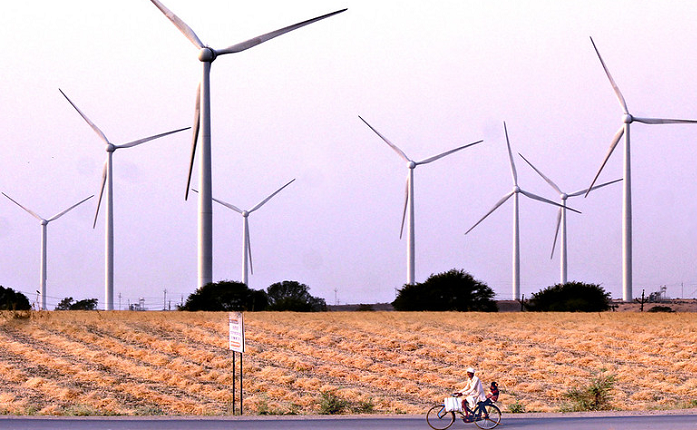InnoBlog: How oil exporting countries are seeking green pastures

Imagine possessing resources that run the global economy. Naturally, you would pivot your efforts to leverage this resource and your growth would inevitably depend on the growing global demand for this resource. Now imagine if the world finds an alternative that slowly but surely starts to fizzle the demand for your resource, what would you do?
Oil exporting countries (OEC) are grappling with this reality today. Most OECs depend on rapid global economic growth that is designed to run on oil and gas. But with battery technologies, renewable energy and green hydrogen growing more economical, countries are weaning off their oil consumption bringing them closer to their climate-change targets. Estimates suggest that petrostates could lose as much as $13 trillion by 2040 because of global climate-change targets!
Forecasters also predict that the world will hit peak oil as early as 2022 and while demand for oil will remain flat for the next decade, long term forecasts suggest that the demand for oil will inevitably shrink by more than 50 % by 2050.
Drive to diversify
OECs need to diversify using oil revenues in order to maintain a stable domestic economy. Because a more diversified economy implies more diversified exports resulting in a diverse tax base that can insulate countries from volatilities in the oil market.
Diversification is already underway with the world’s largest oil exporter – Saudi Arabia creating a $500 million fund to invest in renewable energy and energy efficiency. The country is all set to deploy 30 GW of renewables by 2025 and is expecting to attract $20 billion in investments over the next decade in the sector.
In fact, Saudi Arabia is doubling down on their diversification plans by pumping $500 billion to build ‘Neom’, a fully automated region spanning Saudi Arabia, Jordan and Egypt that will be entirely powered by renewable energy.
Countries like Kuwait where oil account for 90 % of all revenues are focusing on building domestic infrastructure to diversify the economy and has already attracted $3.4 billion investments across the ICT, health care and renewable energy sectors.
As many OECs are blessed with abundant sunshine all year round, the cost of electricity production using solar photovoltaics is one of the lowest across the globe. This development has resulted in a few OECs placing big bets on solar power already. In fact, the UAE is one of the few countries alongside China, India and Egypt to build solar plants larger than 1 Gigawatt.
But how can OECs leverage renewable energy to diversify? Green Hydrogen is the New Oil!
The green hydrogen market could be worth $700 billion by 2050
With a growing number of countries committing to net-zero emissions, electrification of multiple sectors is growing. Decarbonisation in key sectors in Europe such as: transport and heat will double their electricity demand, all of which will be met with renewable energy resources. To decarbonise the industrial sector with renewables would come at a huge cost and cause significant challenges for grid operators across the globe.
Green hydrogen is emerging as the ideal solution for cutting industrial emissions by coupling solar and wind power with electrolysers that would produce hydrogen molecules rather than electrons to power energy intensive industries. The global uptake of green hydrogen depends on its cost competitive compared to fossil fuel-based hydrogen production and OECs can help unlock this opportunity.
The cost of green hydrogen production hinges on two factors – the electrolyser cost and electricity cost. With the EU alone committing to build 40 GW of electrolysers by 2030, electrolysers will experience a steep decline in costs as global major manufacturing hubs join the EU to ramp up electrolyser manufacturing. OECs can integrate low-cost electrolysers and leverage cheap renewable based electricity to pump out low-cost green hydrogen.
OECs like Saudi Arabia are already pouncing this opportunity by launching the world’s largest green hydrogen project using 4 GW of wind and solar power. The hydrogen produced at this plant would be exported as ammonia to global markets and then converted back to hydrogen.
How can you join the revolution?
The proliferation of renewable energy and green hydrogen across OECs will drive them towards a more diversification economy. The revolution will be driven by young professionals who understand technology and new-age energy systems who can accelerate the transition.
Today, there is a huge deficiency of formal education in the energy and tech space and I found EIT InnoEnergy leading this movement by providing an array of professional Master’s programmes that are perfectly suited for the needs of the renewable energy industry and tech companies looking to expand their sustainability portfolio.

